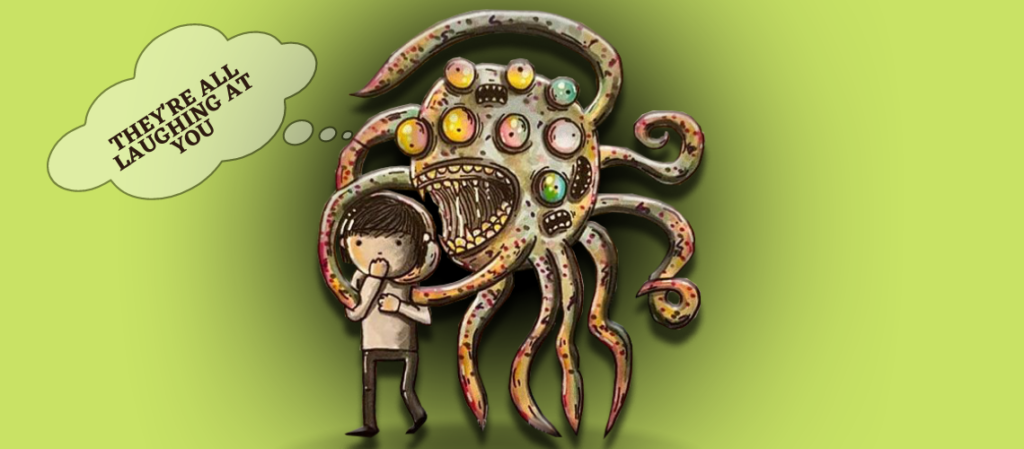It was probably the most dreadful news a parent could wake up to: ‘a 14-year-old child in Std 9th in Betul, M.P. committed suicide because he missed his school bus’. This unfortunate event took place not because the child felt the pressure of life and studies, but literally because he missed his bus.
The ‘Kota Coaching Phenomena’ leading to suicides by children aspiring to engineer good life had just begun to be talked about as an anxiety disorder of dysfunctional social aspirations; but school going children taking such extreme steps was beyond shocking.
Let’s enter the world of extreme fear, anxiety and stress people across all ages face today.
Anxiety Vs. Anxiety Disorder
Anxiety is a normal part of life: a passing phase that is usually harmless. It becomes chronic due to various external (Peer Pressure, Social and Cultural norms) and internal (health problems, self-doubt) variables that interfere with day-to-day functioning.
Anxiety causes Panic Disorders, Obsessive Compulsive Disorder, Clinical Depression, and Attention Deficiency Syndrome to name some. Left uncontained, they have the potential of growing into extreme criminal behaviour, psychopathology, and suicide.
Mind truly is potential of incredible adaptability and tenacity which is at the heart of human evolution and development. Unfortunately, the comfort and security provided by modern living has destroyed that potential by insulating us from danger and, as Todd Sampson says — “those evolutionary switches are mostly just switched off”.
Understanding Extreme Fear
Have you ever, as a kid, feared a monster in your closet? Or as an adult, do you fear taxes?
The level of fear has a direct relation with our experiences and/or age, for most of us. As we grow, we prioritise the ‘fear list’; you wouldn’t still worry about the monster from the closet unless you watch horror movies and regret it later.
What we don’t realise in the ‘fight or flight’ situation is that fear is a survival mechanism.
What makes it dysfunctional in the present context is the inability to assess the difference between perceived and real danger/threat and make correct decisions accordingly.
Amygdala, the centre of emotion in the brain, has a fear alarm system that informs and communicates with the thinking region about the perceived threat which, consequently, assesses the danger and takes action.
The good news is that the thinking-centre can be redesigned to react less to amygdala so that the fear is reduced.
The ground breaking research in the area of the biology of brain functioning: the incredible capability of the brain called Neuroplasticity.
Neuroplasticity
Redesigning the brain to manage fear before it becomes an anxiety disorder is a huge possibility. Science is backing it with the proven research in Neuroplasticity which includes 2 aspects – Neurogenesis (growth of new neurons) and Synaptogenesis (new connections between two neurons).
Visualization, self-inquiry, and practicing learned skills initiate Neurogenesis and Synaptogenesis. These train the mind in overriding impulses, objectively visualise, and reduce the intensity of your feelings in a difficult situation.
Visualisation
This is a powerful technique involving creating an image of the activity in the mind and rehearsing it. Mental rehearsals share the same brain mechanism as actually performing those actions as it relates to a bunch of neurons in the brain that, apart from other roles, also decide which information enters your brain.
The brain adapts to the given situation and it gets easier to reduce impulses when faced with fear: it becomes afraid only when faced with real danger and is enabled to make better/correct decisions in that situation.
Nik Wallenda, the dare-devil to walk the tightrope across the 1500ft Grand Canyon without a safety harness in 2013, shares how “Bravery is not being not afraid, it is taking action despite being afraid”.
Nik would walk along the edge of the Canyon to stay in the situation and visualise it; reducing his response to fear.
The Empirical Evidence: Bravery Is a Learned Skill
In an award winning T.V. series titled ‘Redesign My Brain’, Todd Sampson underwent radical brain makeover targeting to overcome his greatest fears by enduring pain, improving adaptability, sharpening his senses and enhancing creativity.
Todd faced his fear of swimming by being chained, handcuffed and blindfolded underwater with only his radically improved brain to help him do a death-defying escape.
He took on the challenge of confronting his fear of heights by doing a skywalk between two buildings 21 floors high. It normally takes years of practice to do this but Todd dared this feat in 4 months and became the first person in the world to do so.
Moreover, he climbed a straight 120m rock in Utah’s Moab desert rock blindfolded; he achieved this with only 6 weeks of training.
Todd underwent intense brain-training under guidance of Prof. Michael Merzenich. Prof. Merzenich is a pioneer in neuroplasticity revolution underlining the immense potential of brain plasticity in treating mental disorders.
Rx: The Promising Prescription- Vitalise
1 Vi Visualise: Do not underestimate the effectiveness of visualisation.
2 T The 3rd Person: Pause and see your fears and problems objectively.
3 A Ask for help proactively; Identify your support system
4 L Learn and practise mindfulness, meditation: As didactic as it sounds, it is instrumental in getting the prescription working.
5 Se Surround yourself with positive people, indulge in physical activity, get plenty of sunshine: These are more quick fixes; they alter brain chemistry.
Conclusion
A Single line suffices:
It’s truly mind over matter; if you don’t mind, it doesn’t matter.
Vandana Sharma
Visual Content: Amit Abhishek
Editor: Nandini Rao

Vandana Sharma
Author
Vandana is a Post Grad in HR. Her passion to become a farmer and teacher brought her back to formal education 25 years after her post graduation in 1966. She loves cultivating and nurturing friendship, cooking, learning-exploring, cats, cycling, winter sun and summer rains.



